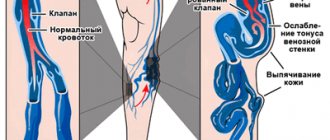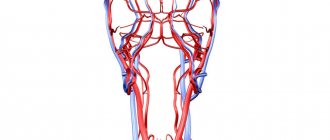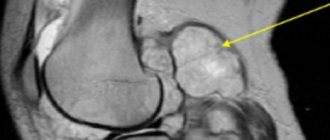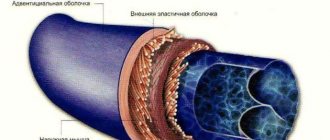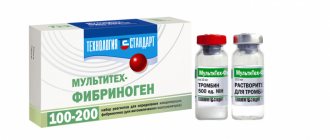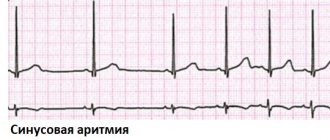Any deviations from the norm are alarming and frightening, but often people learn to live and coexist with something that does not seem to cause them significant discomfort. Such a pathology, for example, is constantly cold hands.
It would seem that there is no actual harm from such a problem, you just have to try to warm your limbs more often so as not to be branded as the Snow Queen. However, doctors note that this indicator should not be ignored, since the lack of warmth in the hands is a sign of serious disorders in the body.
“As a rule, patients in older age groups complain of a feeling of coldness in the hands and feet. This is primarily due to impaired blood supply as a result of changes in the vascular wall, loss of its elasticity, as well as weakness of the heart muscle, which is not able to pump blood, overcoming vascular resistance, to the parts of the body most distant from the heart: hands and feet. Age-related hormonal changes are also of no small importance in the blood supply to the extremities,” says Ph.D., surgeon of the highest category, phlebologist Andrei Begma . Therefore, older people should not be shy and hide the manifestations of such pathology, but consult with a doctor about how this situation can be corrected.
Pathological conditions
However, this problem cannot be attributed to age alone. It is often observed in quite young and able-bodied people. In this case, it is necessary to check for a number of pathological conditions.
Diabetes
“Often, cold hands occur with diabetes mellitus, when the conduction of impulses in the peripheral nerve endings is disrupted, the “correct” impulse does not reach the fingers, and as a result a feeling of cold is felt,” explains Andrei Begma.
One step away from diabetes. What is prediabetes and how to identify it Read more
Smoking
Such a bad habit as smoking also has this negative effect. “Smoking is the cause of gangrene and amputation of limbs. One puff causes a persistent spasm of the vessel, blood supply decreases, a feeling of cold appears, which subsequently leads to irreversible consequences,” says the phlebologist.
Poor nutrition
Lack of proteins and fats in the diet can lead to such unpleasant sensations. Women who practice varied diets may especially often encounter this problem. With a low-calorie diet, the body experiences an acute shortage of the components it needs to produce energy. So you should give preference to a balanced diet, in which all components will be present in the required volume.
Circulation problems
“A congenital anomaly of the blood supply, Raynaud’s disease are the causes of a decrease in temperature in the extremities,” notes the surgeon. This disease leads to spasm of small arteries. As a result, the limbs do not tolerate low temperatures, for example, from water or air. You should be alerted by a tingling sensation in your hands. At the same time, they can change color, become white or even bluish. The attack lasts up to several hours, after which the skin becomes red, fever and pain begin. If such a problem exists, consultation with a vascular surgeon is necessary.
How does the human circulatory system work? Infographics Read more
Vegetovascular dystonia
A person may alternate between hot and cold flashes, blood pressure jumps, fatigue appears and irritability is noted, while the examination often does not reveal any pathologies.
Thyroid diseases
Problems arise due to a failure of hormonal regulation, for which the gland is responsible; a person may be lethargic and depressed, overweight, and constantly want to sleep.
Osteochondrosis
Against the background of deformation and thinning of the intervertebral discs, compression of the spinal cord, as well as the nerves and blood vessels around it, begins to occur, blood circulation is disrupted and a feeling of coldness appears in the hands.
There are many reasons, and it is necessary to understand them in detail. This will allow you to identify the problem in time and cure it.
Five ailments of our time. The most popular diseases and their symptoms Read more
Vegetovascular dystonia
In this case, hot and cold flashes, lack of air, dizziness are felt, and blood pressure rises and falls. Irritability increases and fatigue increases. From time to time I experience pain in the heart and tingling in various parts of the body. Moreover, the examination does not reveal signs of damage to organs and systems. The cause of the malaise is a disruption of the autonomic nervous system, which regulates the entire body.
What to do?
It often occurs against the background of many diseases, so it is important to undergo a full examination, especially by an endocrinologist and neurologist. Physiotherapy, exercise therapy, and psychotherapy help to cope with the disease.
Diagnosis of the problem
No self-medication is acceptable in this situation. “If you have complaints about feeling cold in your hands or feet, you should consult a doctor. Proper treatment prescribed in a timely manner will help get rid of unpleasant sensations and prevent further development of the disease, avoiding possible complications,” notes Andrei Begma.
To find out the reasons why your hands are constantly cold, you need to undergo a full examination. As a rule, therapists, endocrinologists, vascular surgeons, gastroenterologists, hematologists, etc. can take part in it. During the consultation and initial examination, doctors study the patient’s condition, measure basic blood pressure indicators and give orders for general tests. Then, if necessary, the list can be expanded. So, for example, the following may be proposed:
- blood test to determine the amount of nutrients;
- biochemical studies;
- checking blood flow in the arteries;
- checking vascular tone;
- blood test for beneficial microelements.
In addition, they may offer ultrasound of internal organs. If the situation is complex or needs to be studied in more depth, CT and MRI are offered.
The blood will tell. What tests should everyone take? More details
Iron-deficiency anemia
Iron is the main component of hemoglobin in the blood, the main transport vehicle for oxygen. Lack of iron leads to disruption of metabolic processes in cells, including energy. This occurs due to poor nutrition, impaired absorption of iron in the gastrointestinal tract, increased blood loss (nasal, uterine, etc.), with a special need for it (pregnancy, lactation, rapid growth), etc. Additional signals - pallor skin and mucous membranes, dizziness, fatigue, tinnitus, rapid heartbeat.
What to do?
First of all, a clinical blood test is required. The normal hemoglobin level in children under 6 years of age is 110 g/l, in children over 6 years of age and adults – 120 g/l. A special diet is important - less milk, more meat, fruits and vegetables. Iron supplements are taken in combination with ascorbic acid.
Necessary therapy
Treatment, of course, will be selected based on what disease caused the problem. “In treatment, they use vasoactive drugs that improve blood circulation, physiotherapy, massage, normalize hormonal levels, and select a therapeutic diet,” says the phlebologist.
In a situation where all measures are taken on time and the problem is not ignored, there is every chance to get rid of the unpleasant symptom and constantly enjoy the feeling of warm, not icy hands.
There are contraindications, you should consult your doctor
Thyroid diseases
The thyroid gland is a key link in the hormonal regulation of the entire body. With hypothyroidism (lack of thyroid hormones), metabolic processes slow down. Lethargy and lethargy, drowsiness, and excess weight appear. The person feels depressed. The face, especially the eyelids, swells, and the pulse slows down. The skin becomes dry, often flakes, and thickens. The functioning of the mechanisms responsible for maintaining normal body temperature is disrupted. When thyroid hormone levels are low, a person often feels cold.
What to do?
It is important to undergo an examination by an endocrinologist, do an ultrasound of the thyroid gland, and take a general blood and urine test. If necessary, the doctor may prescribe additional X-ray and magnetic resonance imaging, computed tomography, etc.
Causes of chilly hands
Physiological factors
Coldness of the upper extremities is often observed in older people, which is associated with impaired peripheral circulation and spasm of small vessels. Patients complain that their hands are constantly cold and the sensitivity of their fingers worsens. The symptom sometimes occurs in women with constitutional hypotension or emotional stress. In this case, vascular spasm occurs, blood flow to the distal parts of the limbs decreases.
Frostbite
Even after mild grade 1-2 damage to the skin, increased sensitivity of the hands to low temperatures persists for a long time. Chilliness with an unpleasant tingling sensation appears when a person washes his hands in cold water or goes outside in winter without gloves. Even in a warm room, discomfort is periodically felt; the hands remain cold. Under the influence of cold, numbness and paresthesia of the fingers usually occur, after which the hands do not warm up for a long time.
Raynaud's syndrome
At the onset of the disease, patients suffer from rare bouts of chilliness, observed during times of stress or exposure to low temperatures. The tips of the fingers suddenly turn pale, become milky white, and there is a feeling of numbness and goosebumps crawling on the skin. The paroxysm is short-lived, after its end the chilliness is replaced by an unpleasant burning sensation, a feeling of heat and redness of the fingers.
As Raynaud's syndrome progresses, attacks of arm ischemia lengthen to 1 hour. They begin without visible provoking factors and are accompanied by severe chilliness, pain, and loss of sensitivity in the hands. During the interictal period, the fingers are almost constantly cold, the patient experiences discomfort and pain in the hands when exposed to low temperatures. Over time, swelling, trophic ulcers, and deformations of the nail plates occur.
Cold hands
Vibration disease
Vibration disease develops in workers who are constantly in contact with impact or rotational mechanisms. Coldness of the hands manifests itself during periods of rest or at night, combined with paresthesia and nagging pain. At first, the symptoms last 10-15 minutes, but gradually the attacks lengthen, disturbances in active movements of the fingers appear, and sensitivity decreases.
Vegetative-vascular dystonia
In young people, chilliness of the hands and feet is often associated with disorders of the autonomic innervation. Patients with VSD note that the skin of the distal extremities is constantly cold to the touch and does not warm up well in warm rooms. Severe chilliness bothers a person on the street in the autumn-winter period - even in thick gloves or mittens one feels cold, paresthesia and an unpleasant tingling of the fingers.
Carpal tunnel syndrome
Chilliness, numbness, and paresthesia caused by compression of nerve fibers in the wrist area most often develop as an occupational disease—in musicians, packers, and people who work at a computer. The fingers are constantly cold, especially after a long working day, when the hands are in one position. Carpal tunnel syndrome causes periodic pain, decreased sensitivity, and difficulty bending and straightening the fingers.
Hypothyroidism
A decrease in the functional activity of the thyroid gland is accompanied by disturbances in thermoregulation. Patients with hypothyroidism are constantly cold, their skin becomes dry and cold to the touch. The most pronounced symptoms are in the area of the hands, which are not covered by clothing and are more likely to experience temperature changes. The chilliness does not go away even with massage, rubbing or warming the hands with a special heating pad.
Osteochondrosis
If the pathology affects the thoracic vertebrae, the innervation of the upper limbs is disrupted, which causes chilliness. The person also experiences intense back pain, which can radiate to the arm. Symptoms of osteochondrosis intensify with prolonged stay in an uncomfortable position, monotonous work, awkward turns and bends of the body.
Rare causes
- Lack of nutrients
: low-calorie diets, vitamin deficiency, disorders of digestion and absorption of food. - Neurological diseases
: radial nerve neuropathy, multiple sclerosis, acute cerebrovascular accidents. - Autoimmune processes
: scleroderma, systemic lupus erythematosus, periarteritis.
Atherosclerosis
There is a thickening and loss of elasticity of the walls of the arteries, a narrowing of their lumen with subsequent disruption of the blood supply to the organs. Hence the cold hands. When cerebral vessels are damaged, tinnitus, dizziness, memory loss, and headache are noted. Eating with an excess amount of animal fat, a sedentary lifestyle, and psycho-emotional stress can lead to this disease.
What to do?
An ECG, ultrasound of the heart and blood vessels, rheovasography, angiography, coronary angiography are performed, blood pressure is measured, lipid levels (cholesterol, etc.) and blood sugar are examined.
Treatment
Help before diagnosis
It is necessary to exclude alcohol and smoking, which provoke vasospasm and coldness of the extremities. Nutrition should be varied and balanced, contain sufficient amounts of vitamins. You should stop wearing bracelets, watches and tight cuffs, which impair blood circulation in the distal part of the arms. In the cold season, you need to wear gloves made of natural materials; in severe frost, limit your stay outside.
Patients are recommended to do contrasting hand baths, gradually getting used to high and low temperatures. Self-massage of the hands helps improve blood circulation. If chilliness and accompanying symptoms are caused by an occupational disease, you need to change your place of work. If you experience discomfort or pain in your hands, sensory disturbances, or limited movement, you should consult a doctor.
Conservative therapy
Drug treatment methods are selected taking into account the underlying disease. For vascular disorders and Raynaud's syndrome, therapy is carried out with calcium antagonists and antiplatelet agents. Medicines dilate small vessels of the upper extremities, prevent ischemia and vasospasm, so episodes of chilliness and numbness in the hands occur much less frequently. To enhance the effect, the treatment regimen is supplemented with selective serotonin receptor blockers.
Neurological causes of pathology require the prescription of anti-inflammatory drugs from the category of NSAIDs and systemic corticosteroids. To reduce discomfort, sedatives and tranquilizers are recommended. To improve nerve transmission and eliminate chilliness, injections of B vitamins are indicated. If symptoms are caused by hypothyroidism, hormone replacement therapy is selected.
Physiotherapy methods play an important role in the treatment of chilly hands. For effective medicinal effects on the affected area, electrophoresis or phonophoresis is used. For chronic neurological diseases, electromyostimulation and reflexology are used to increase the speed of nerve transmission and increase muscle strength. Myofascial massage helps to cope with pain and impaired motor function.
